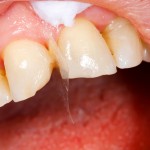
Adhesive dental restorative systems are an essential component of modern dental restorative practice. These adhesive systems use two main bonding techniques: the etch-and-rinse and self-etch systems. The aim of this review was to evaluate whether universal adhesives with prior acid etching improve the bond strength to dentin and enamel.
Methods
Searches were conducted in the Medline, ISI Web of Science, Scopus, SciELO, LILACS, IBECS, BBO (Biblioteca Brasileira de Odontologia) and the Cochrane Library databases. Only in-vitro studies related to universal adhesives systems that evaluated dentin and/or enamel bond strength by the self-etch and etch-and-rinse techniques were considered. Two reviewers independently selected the studies and assessed their methodological quality.
Results
- 10 studies were included
- Of the 10 studies, 8 were considered to present a medium risk of bias, and 2 a low risk of bias.
- 7 studies evaluated the multi-mode adhesive Scotchbond Universal (3 M Espe, St. Paul, MN, USA).
- 4 studies evaluated the bond strength of G-Bond Plus (GC, Tokyo, Japan),
- 4 studies evaluated the bond strength of All-Bond Universal (Bisco, Schaumburg, IL, USA).
- Peak Universal Adhesive (Ultradent, South Jordan, UT, USA); Futurabond U (Voco, Cuxhaven, Germany) and Prime&Bond Elect (Dentsply, Caulk, Milford, DE, USA) were evaluated in single studies.
- Only one universal adhesive was ultra-mild (All-Bond Universal).
- The analysis of dentin micro-tensile bond strength showed no statistically significant difference between the etch-and-rinse and self-etch strategies for mild universal adhesives.
- For the ultra-mild All-Bond Universal adhesive, the etch-and-rinse strategy was significantly different than the self-etch mode in terms of dentin micro-tensile bond strength, as well as in the global analysis of enamel micro-tensile and micro-shear bond strength.
Conclusions
The authors concluded: –
The in-vitro literature seems to suggest that bond strength is improved by the use of multi-mode adhesives with prior acid etching only for enamel; this effect was not evident for dentin with the use of mild universal adhesives. The only ultra-mild universal adhesive evaluated (All-Bond Universal) showed an improvement in the dentin bond strength with the etch-and-rinse strategy. Based on this meta-analysis, selective enamel etching could be considered the best strategy for optimizing the bond strength of mild universal adhesives.
Comments
While this review suggests that the prior acid etching to universal adhesives improves the bond strength to enamel but not to dentine for mild universal adhesives. These results need to be interpreted with caution for, as the authors note, the studies were quite heterogeneous and only 2 studies were considered to be at a low risk of bias. In addition all the included studies were conducted in vitro and the validity of bond strength tests to predict clinical performance is questionable as the oral environment, masticatory stresses pH and temperature cycling could impact on performance.
Links
Rosa WL, Piva E, Silva AF. Bond strength of universal adhesives: A systematic review and meta-analysis. J Dent. 2015 Apr 14. pii: S0300-5712(15)00086-X. doi: 10.1016/j.jdent.2015.04.003. [Epub ahead of print] PubMed PMID: 25882585.

Dental bond strength improves with etching. http://t.co/3w9OvLpZ3W
Etching enamel improves bond strength of universal adhesives. http://t.co/3w9OvLpZ3W
Etching prior to universal adhesives improves the bond strength to enamel. http://t.co/3w9OvLpZ3W
Etching prior to mild universal adhesives did not improve the bond strength to dentine. http://t.co/3w9OvLpZ3W
Don’t miss – Dental bond strength improves with etching. http://t.co/3w9OvLpZ3W
Dental bond strength improves with etching. http://t.co/SYJsfW34iS via @TheDentalElf